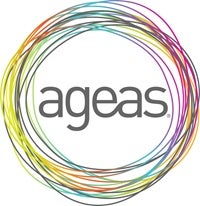
LexisNexis® ThreatMetrix® helps Ageas® to significantly reduce identity theft and fraud losses

Business Challenge
Specific Requirements
- Prevent identity theft
- Significantly reduce fraud losses
- Enhance anomaly intelligence for hard to find fraud typologies
- Provide fresh intelligence to more comprehensively assess risk
- Easily integrate with existing technology workflows
The Solution
LexisNexis® ThreatMetrix®
Business Problem In Detail
Identity theft and application fraud are huge and growing problem for the Insurance industry. The latest figures from CIFAS shows that there was an 11% rise in identity theft in 2021 with the FCA projecting the cost of this at over £78 Million to the UK. Additionally the amount of insurance fraud in the UK is estimated by the ABI to be costing around £1.3 Billion with average fraudulent claims now costing £12,000 per claim.
As a reputable insurer, Ageas wanted to be confident it was doing everything it could to protect its customers and the organisation from these issues. The company was concerned it was not always detecting fraud until too late in the process and wanted to be better equipped to improve its ability to speed up the resolution of fraud investigations as well as uncovering identity theft.
The company was interested in a solution that combined the latest threat intelligence (on known fraudsters and compromised devices or credentials), with sophisticated software and analytics capable of detecting anomalies and suspicious behaviour upfront. Ageas were also interested in gaining access to a much wider level of intelligence that it did not have visibility of, for example unexpected connections between people making applications; multiple applications from the same device; applications from unexpected locations; or the use of newly created email addresses, that might indicate a higher risk of fraud and therefore require further investigation before the application is accepted.

LexisNexis® Digital Identity Network®
It takes a Network to Fight a Network
Using LexisNexis® ThreatMetrix®, and in particular its device identification capabilities such as ExactID and SmartID, Ageas has significantly improved its ability to identify fraudulent links and associations that would otherwise have gone unnoticed.
Ageas now layers together a range of additional identity attributes such as device ID, GPS location data, email addresses and behavioural biometrics, to help identify fraud risk far more effectively, at the point of application.
LexisNexis ThreatMetrix draws on shared, global intelligence from millions of daily consumer interactions, including logins, payments and new account applications, which are collected and processed through the LexisNexis® Digital Identity Network®. Using this information, the ThreatMetrix solution creates a unique digital identity for each and every user, based on an analysis of the myriad of connections that users make as they transact online. In this way the digital identity profile helps organisations to recognise trusted users and what is normal for them, and highlights anomalies.
SmartID Helps Ageas Identify First Ghost Broking Fraud Ring
During the initial testing phase, one particular policy was reviewed to ensure the API was working as expected. The ‘Related Events’ feature was employed, which successfully identified an additional three policies linked to the first. On further investigation it became clear that all three policies had been set up in the same month. The SmartID® capability was then able to link all four policy applications back to the same device.
Ageas reviewed each of the four policies within their own policy admin system and saw that there had been no concerns flagged. One of the policies even had a record of the applicant having supplied proof of a No Claims Discount. However, further investigations resulted in all four policies being cancelled for ghost broking – the No Claims Discount turned out to be a doctored document.
Without the ThreatMetrix solution, Ageas would not have identified the link between the policies and the fraud ring would not have been identified.
“Ageas has taken a mature approach to data by ensuring cross-functional alignment is part of our core ethos. Whereas fraud is often considered under the spotlight of claims, ThreatMetrix enables us to identify fraud from the perspective of policy inception. Its algorithms and ruleset opens up a whole new layer of fraud protection.”
– Adam Clarke,
Chief Underwriting Officer,
Ageas UK
